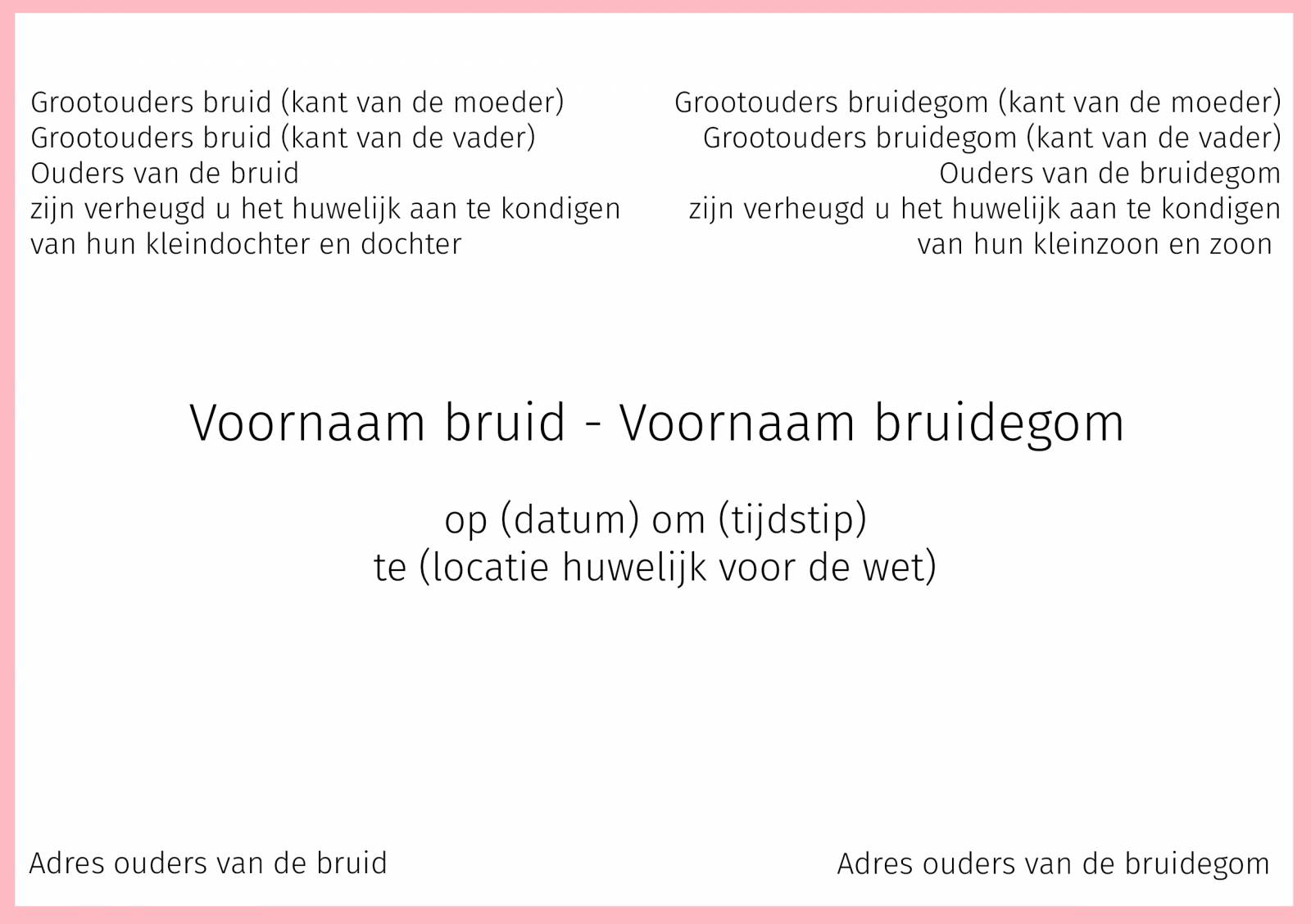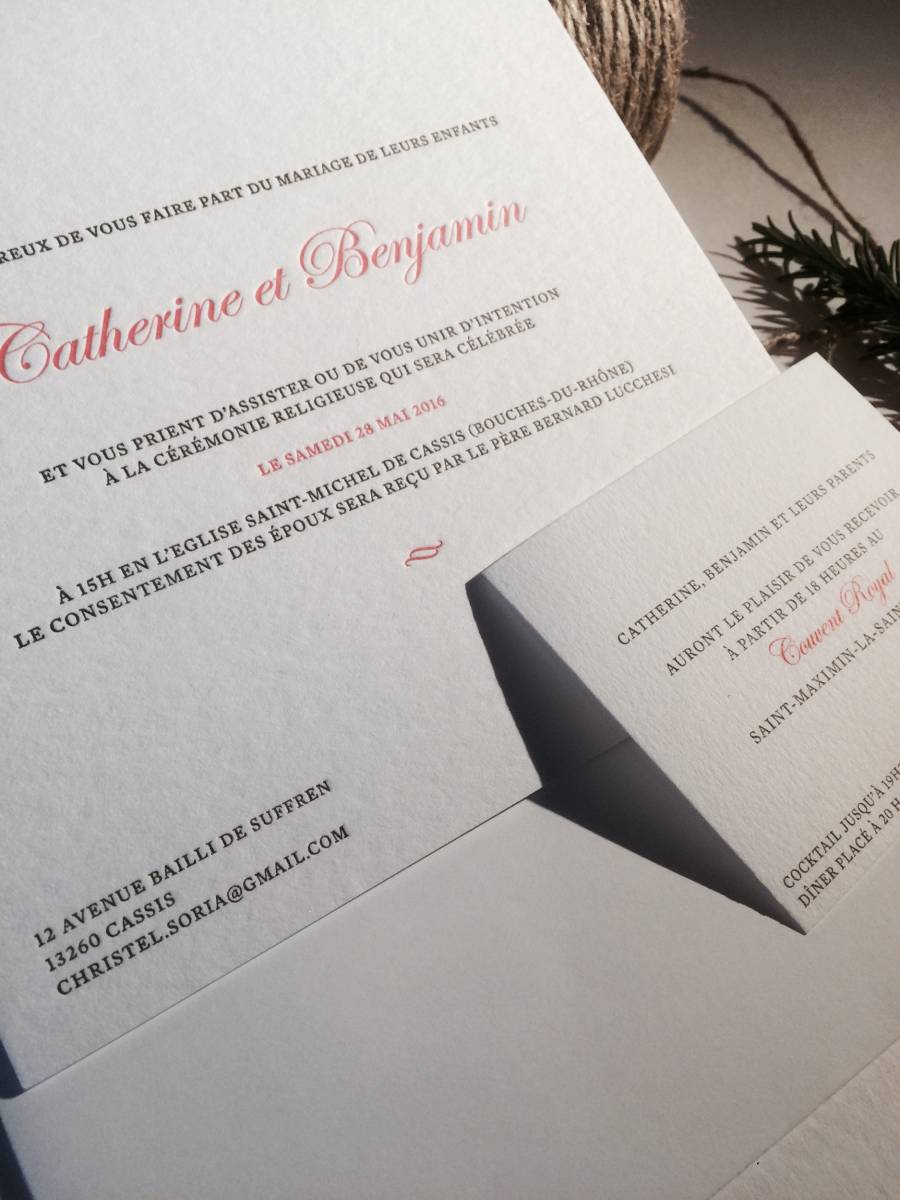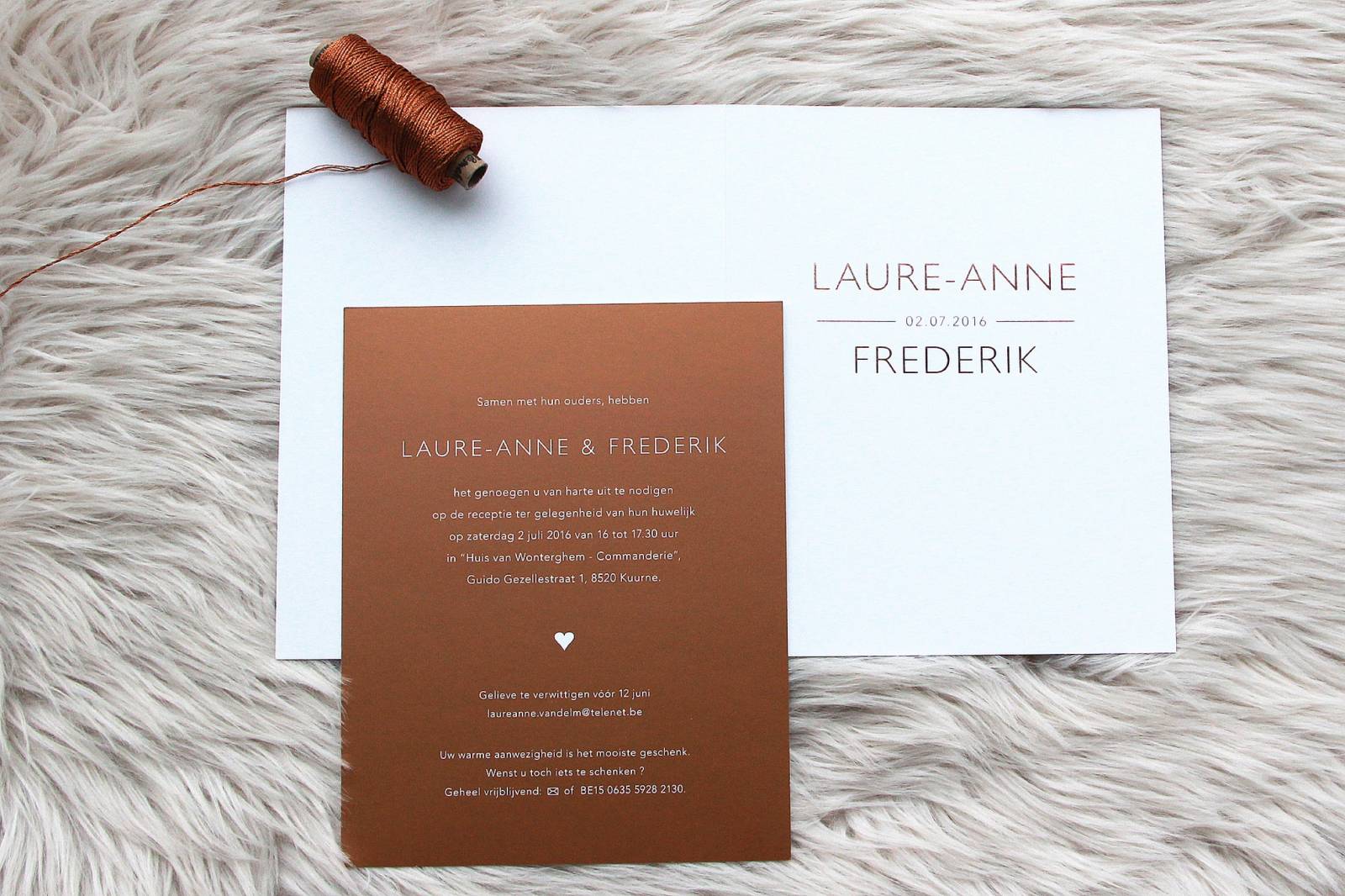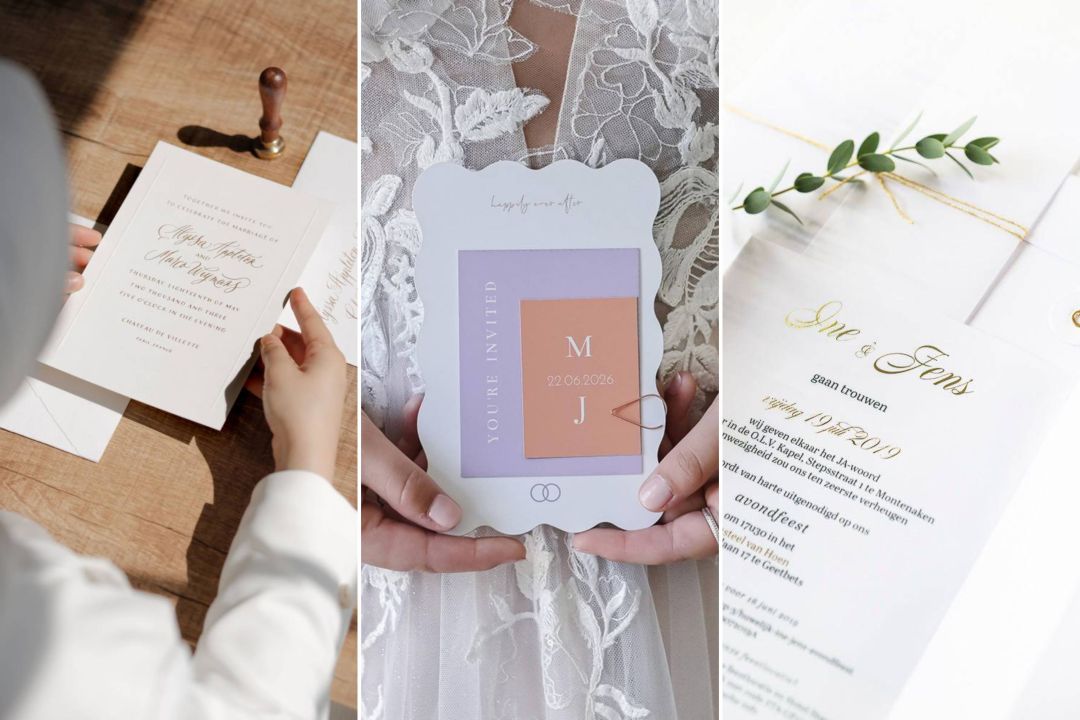How to send out your wedding invitations in line with the rules of etiquette? Here's how to do it!
09/01/2026 09:00 | Etiquette
Are you engaged? Then you can shout from the rooftops that you are getting married! But how do you start with your official invitations? How do you write to your guests? Do you stick a label on the envelope or do you write their name in your best handwriting? With these 6 tips, you can send out your wedding invitations in accordance with the rules of etiquette.
Photo (above, f.l.t.r.): Graphic Design: Assialucki - Photographer: Zahraalipgraphy / Graphic Design: Uitgelijnd / Graphic Design: Dasi
The style of the invitation
The content and style of your wedding invitations are determined by whether or not you live together as an engaged couple. Maybe you already live together but you would like to have a classic invitation?
Situation 1: you already live together with your fiancé
Have you been living together with your fiancé for a while now and/or are you paying for the party yourself? Then you should announce your wedding on your own wedding invitations. Feel free to choose a modern card and creative wording. There are no specific rules of etiquette. Just be sure to mention the important things like your names, the location of the wedding, the time, etc.
Situation 2: you do NOT live with your fiancé yet
You are not living together with your fiancé yet and you don't have any children? Then you can opt for the "classic" invitation: a more formal, traditional wedding invitation, entirely according to the rules of etiquette. Traditionally, it is your parents and grandparents who announce the marriage. In this situation, it is assumed that it is your parents who will pay for all or part of the party.
General:
- A traditional invitation is often folded in half or made up of several separate cards.
- The mothers invite the guests to the reception and the parents (as a couple) invite them to the evening party
If you choose a double-folded card:
- The (grand)parents of the bride are listed at the top of the card on the left, the (grand)parents of the groom on the right. In the middle, the date, time and location of your wedding.
- At the bottom of the card, the address of the bride's parents should be on the left, the address of the groom's parents on the right. In between is the address for the occasion.
If you're sending a wedding invitation with several separate cards:
- The content is the same as on the double folded card, but you work with one family per announcement card.
- The address for the occasion is given on a separate party card.
For example:

A few exceptions
Are your parents (in law) divorced? Then they are mentioned separately (with or without a new partner):
Mrs Rita Vandamme (Divorced mother of the bride)
Mr Marc Steelandt (Divorced father of the bride)
OR
Mrs Rita Vandamme and Mr Filip Debo (Divorced mother of the bride + new partner of the mother of the bride)
Mr. and Mrs. Marc Steelandt - Hanskens (Divorced father of the bride but in the meantime married again with his new partner)
Did one of your parents (in law) pass away? Then proceed as follows:
Mrs Jozef Delputte - Baekelandt (The husband passed away)
Mr. Marc Steelandt (The spouse has passed away. She is not mentioned anymore, only the name of the widower)

Photo by Scarabar
The letter headings
What wording do you use on your envelopes? Here is an overview:
- For married couples: Mr. & Mrs. Marc Steelandt - Vandamme (For a married couple only the first name of the man is used + both surnames or only the surname of the man)
In the case of unmarried couples: Mrs Rita Vandamme & Mr Marc Steelandt
- For married LGB couples: Mr Davy & Mr Stijn Steelandt - Debals or Ms Elise & Ms Ann Courtens - Romel (both first names are used for married LGB couples)
- For unmarried LGBT couples: Mr Davy Steelandt & Mr Stijn Debals or Ms Elise Courtens & Ms Ann Romel
Don't know the partner's name? Then just write '& partner'. Are you inviting a whole family? Then the above rules apply + '& family'.

Photo by DASI
The back cover
An address on the back flap: faux pas or not? In classic wedding invitations, you never write an address on the back. Nowadays, we see more and more couples consciously do this for "security reasons": if a postal address turns out to be wrong, the postman can send your invitation back to you as the sender. In a traditional wedding invitation, you don't glue the envelope together: you fold it.
Modern envelopes with an adhesive strip should have an address written or printed on the back. Printing an address on the back flap always gives a more sophisticated effect than using a stamp.
Label, a njet?
Labels often come across as businesslike. The addresses on your personal invitations are best written by hand. Get out that pen already, or ask your printer if he or she works with a calligrapher!

Photo by Anderz
Reminder
Is your wedding invitation snowed under in the mail or have some guests forgotten to reply? In principle it is polite for your guests to confirm whether or not they can attend within a week of receiving your wedding invitation. So in theory, a reminder is not necessary. But in practice, a non-confirmed guest is often difficult. Feel free to call your guests if they don't confirm up to three weeks before your wedding day. It's more personal than an email, and maybe something went wrong in the transmission of your wedding invitation.
As a guest, you normally reply via a handwritten card or - if you choose to communicate this - via your joint email address.
Bank account number
An envelope or a bank account number at the bottom of the wedding invitation. Your guests will know immediately what you mean. But can it be done according to the rules of etiquette? Yes, it can!

Photo: Drukkerij Baert
